
|
Astronomy Picture Of the Day (APOD)
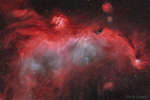 APOD: 2024 March 13 B The Seagull Nebula
APOD: 2024 March 13 B The Seagull Nebula
12.03.2024
A broad expanse of glowing gas and dust presents a bird-like visage to astronomers from planet Earth, suggesting its popular moniker: the Seagull Nebula. This portrait of the cosmic bird covers a 1.6-degree...
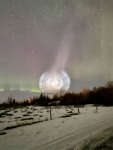 APOD: 2024 March 12 B A Galaxy Shaped Rocket Exhaust Spiral
APOD: 2024 March 12 B A Galaxy Shaped Rocket Exhaust Spiral
11.03.2024
What's that over the horizon? What may look like a strangely nearby galaxy is actually a normal rocket's exhaust plume -- but unusually backlit. Although the SpaceX Falcon 9 rocket was launched from...
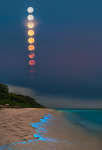 APOD: 2024 March 11 B A Full Plankton Moon
APOD: 2024 March 11 B A Full Plankton Moon
10.03.2024
What glows in the night? This night featured a combination of usual and unusual glows. Perhaps the most usual glow was from the Moon, a potentially familiar object. The full Moon's nearly vertical descent results from the observer being near Earth's equator.
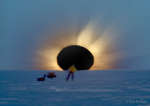 APOD: 2024 March 10 B A Total Eclipse at the End of the World
APOD: 2024 March 10 B A Total Eclipse at the End of the World
9.03.2024
Would you go to the end of the world to see a total eclipse of the Sun? If you did, would you be surprised to find someone else there already? In 2003, the Sun, the Moon, Antarctica, and two photographers all lined up in Antarctica during an unusual total solar eclipse.
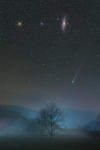 Comet 12P/Pons Brooks in Northern Spring
Comet 12P/Pons Brooks in Northern Spring
8.03.2024
As spring approaches for northern skygazers Comet 12P/Pons-Brooks is growing brighter. Currently visible with small telescopes and binoculars the Halley-type comet could reach naked eye visibility in the coming weeks. Seen despite a foggy...
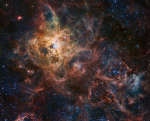 The Tarantula Zone
The Tarantula Zone
7.03.2024
The Tarantula Nebula, also known as 30 Doradus, is more than a thousand light-years in diameter, a giant star forming region within nearby satellite galaxy the Large Magellanic Cloud. About 180 thousand light-years away, it's the largest, most violent star forming region known in the whole Local Group of galaxies.
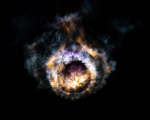 The Crew 8 Nebula
The Crew 8 Nebula
6.03.2024
Not the James Webb Space Telescope's latest view of a distant galactic nebula, this cloud of gas and dust dazzled spacecoast skygazers on March 3. The telephoto snapshot was taken minutes after the launch of a Falcon 9 rocket on the SpaceX Crew-8 mission, to the International Space Station.
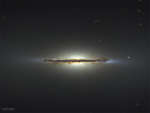 APOD: 2024 March 6 B M102: Edge on Disk Galaxy
APOD: 2024 March 6 B M102: Edge on Disk Galaxy
5.03.2024
What kind of celestial object is this? A relatively normal galaxy -- but seen from its edge. Many disk galaxies are actually just as thin as NGC 5866, the Spindle galaxy, pictured here, but are not seen edge-on from our vantage point. A perhaps more familiar galaxy seen edge-on is our own Milky Way galaxy.
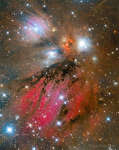 APOD: 2024 March 5 B NGC 2170: Angel Nebula Abstract Art
APOD: 2024 March 5 B NGC 2170: Angel Nebula Abstract Art
4.03.2024
Is this a painting or a photograph? In this celestial abstract art composed with a cosmic brush, dusty nebula NGC 2170, also known as the Angel Nebula, shines just above the image center. Reflecting...
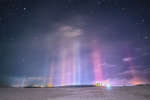 APOD: 2024 March 4 B Light Pillars Over Inner Mongolia
APOD: 2024 March 4 B Light Pillars Over Inner Mongolia
3.03.2024
What's happening across that field? Pictured here are not auroras but nearby light pillars, a phenomenon typically much closer. In most places on Earth, a lucky viewer can see a Sun pillar, a column of light appearing to extend up from the Sun caused by flat fluttering ice-crystals reflecting sunlight from the upper atmosphere.
|
January February March April May June |
|||||||||||||||||||||||||||||||||||||||||||||||||